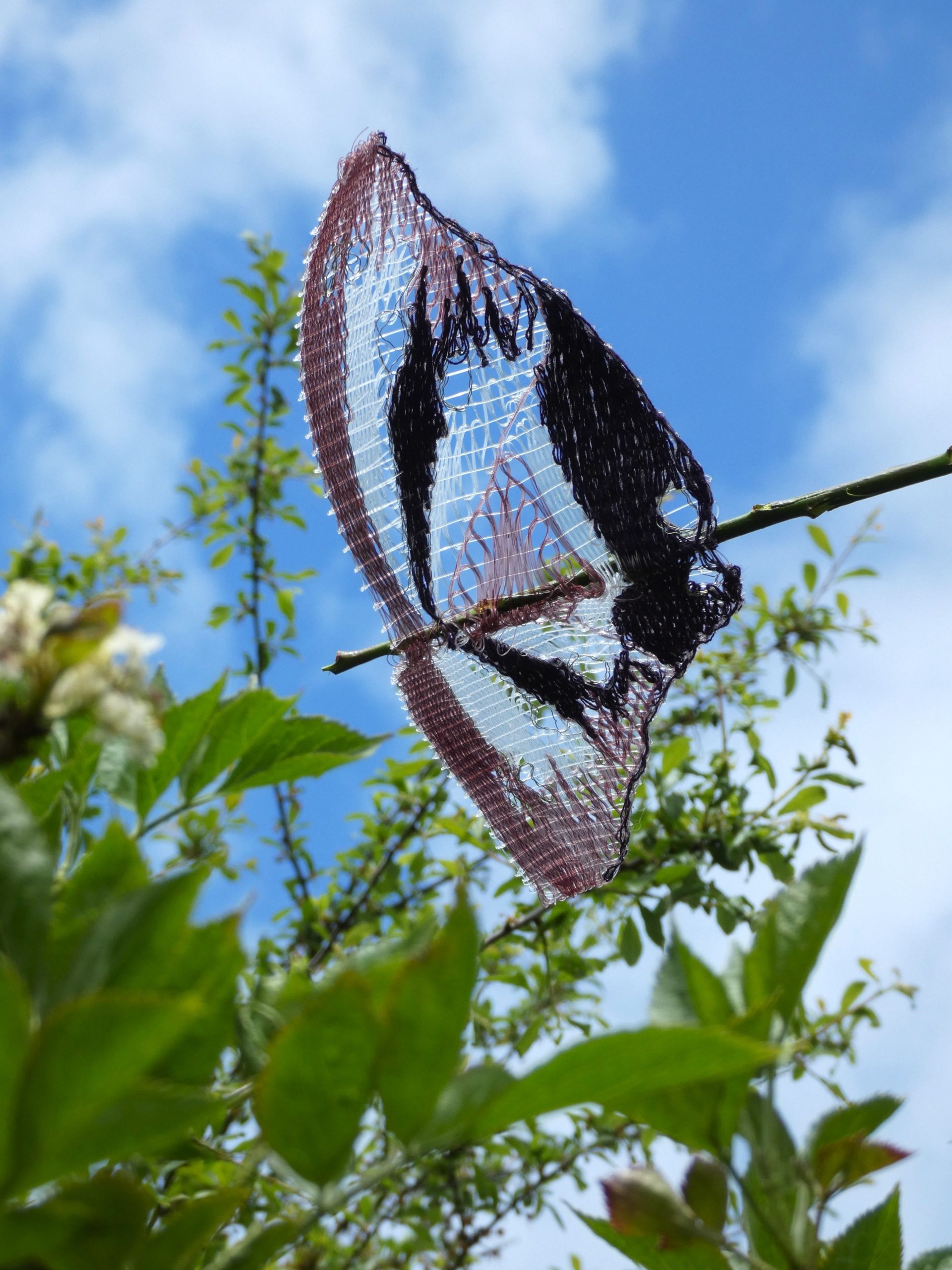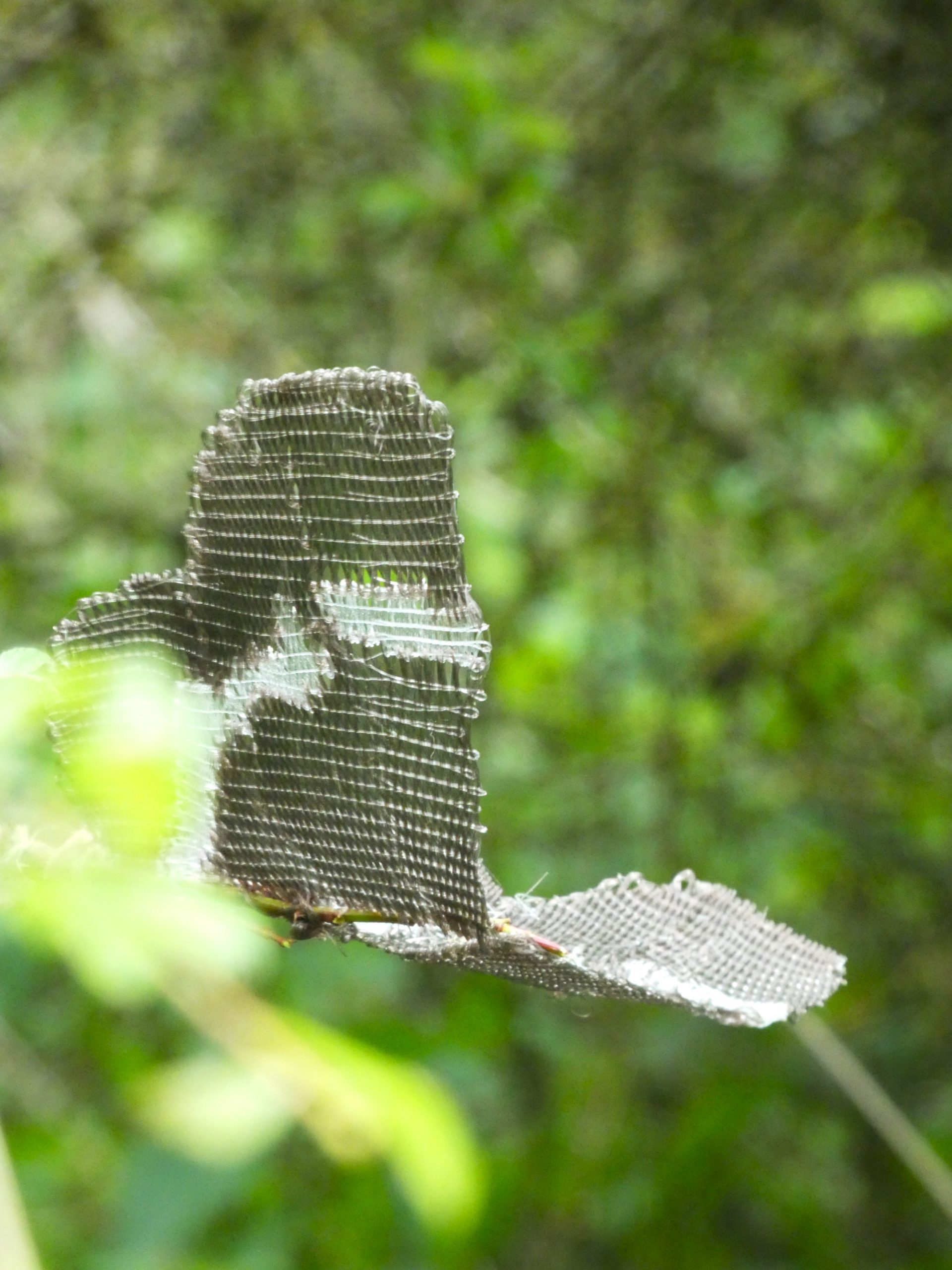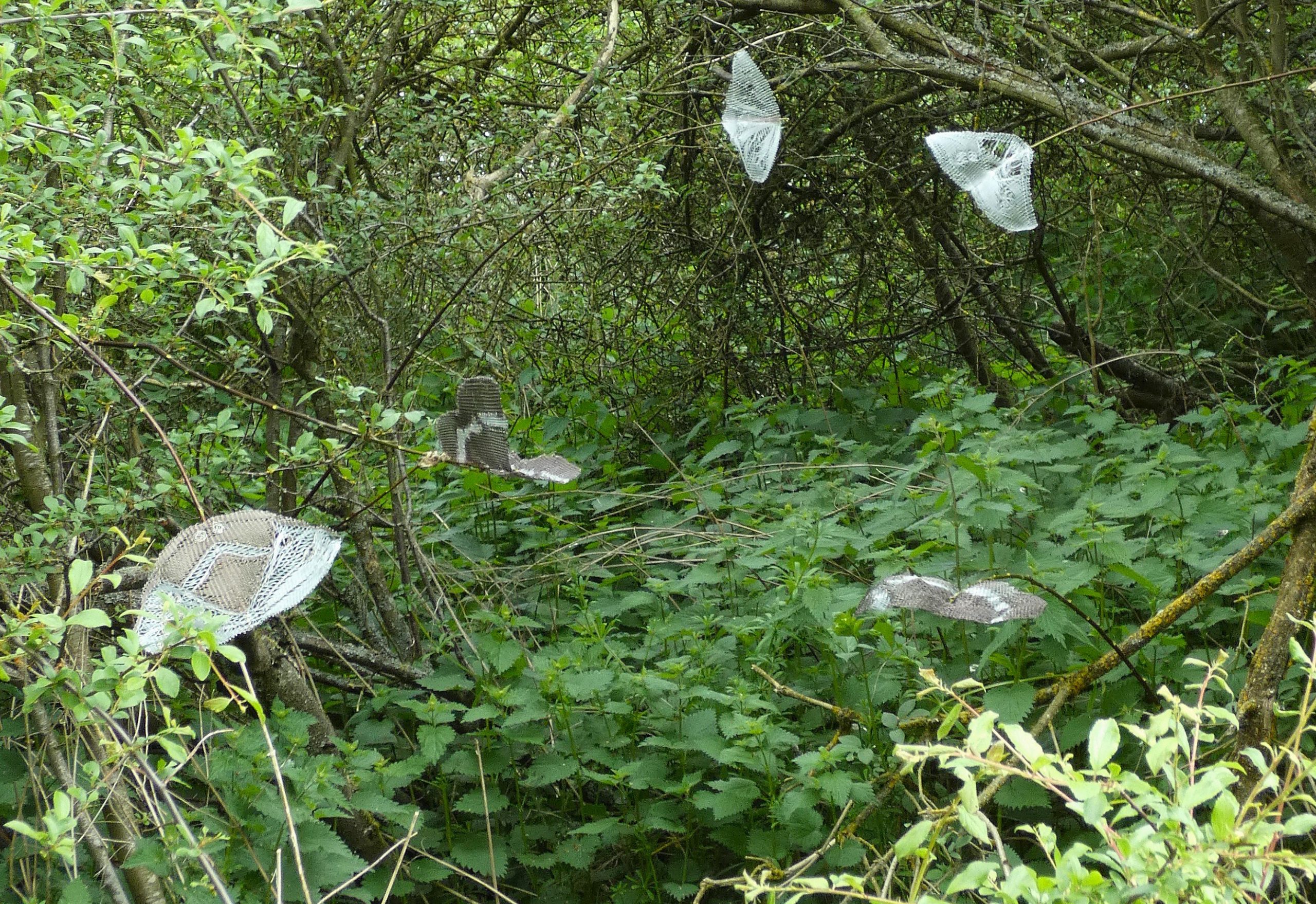Kaleidoscope
An outdoor installation
I was absolutely delighted to have my submission accepted for The Living Theatres Art Trail. After completing my Seasons project a few years ago, the idea of taking my work outdoors had been quietly developing—though until now ideas had only been explored within the confines of my own garden, where I’ve displayed various woven pieces over the past couple of years, watching them respond to changing seasons and weather conditions.
The brief for the trail was:
Mother Nature: Nurture, Heal, Destroy.
It explored nature’s immense and ever-changing power, and how our relationship with the environment has evolved through climate change and human interference. Artists were invited to reflect on how nature impacts us, both positively and negatively, while focusing on our immediate surroundings, including vital chalk streams, ancient hedgerows, and nearby woodlands. A key element of the brief was embedding sustainability in both the making and longevity of the work.
It was a brief that resonated with me, it felt as though it had been written for my practice.

Currently, I’m deeply immersed in the world of butterflies and moths, so my thoughts immediately turned to the importance of our woodlands for some of Hertfordshire’s most elusive butterflies. As this was an outdoor installation, my go-to material of old fishing line which withstands the elements and plays beautifully with light seemed perfect.
With my concept accepted, I decided to highlight three woodland butterflies: the Purple Emperor, White Admiral, and White-Letter Hairstreak. I wove eight butterflies in total, each different, inspired by the patterns and colours of their wings.

- The White-Letter Hairstreak is a priority species and incredibly elusive, as it generally flies high in the canopy of elm trees.
- The White Admiral, also a priority species, can be easier to spot while it feeds on bramble nectar.
- The Purple Emperor, while not currently on the priority list, is another canopy flyer whose population, despite decline over the past few decades, appears to be increasing, with more frequent sightings across a wider area.
How did I weave the butterflies?
It’s a question I was recently asked, and my answer was: “Mainly in fishing line, mostly using eccentric weave and a dash of light play!”
I have also incorporated wire in some of the butterflies; this will corrode and change colour over time. A couple of the Purple Emperors also include cotton, which will fade and break down faster than the fishing line. All materials were sourced from waste, either donated surplus from craft stashes or found in the corners of sheds.
The best way to show my making process is visually, so I’ve created a series of short video clips. You can find links to these at the bottom of this page.
The butterflies are installed among blackthorn and nettles at the top of a hill, next to The Living Theatre’s entrance and bar seating area. Nestled into the local habitat, some butterflies are more visible than others, this is intentional, Kaleidoscope invites viewers not only to spot these delicate forms but also to pause and notice the wildlife and nature they inhabit.

We are relearning what are society seemed to forget: how vital nature is, not just ecologically, but emotionally and spiritually. Simply being among it can have a positive effect on our mental health and wellbeing.
Why the name Kaleidoscope? It’s a collective name for a group of butterflies.
Why butterflies? Because they are a symbol of hope.
Watch my making process by visiting my You Tube page
Choosing waste line for a White-Letter Hairstreak
Kaleidoscope is included in The Living Theatres 2025 Art Trail details for which can be found on my news page
If you want to learn about the importance of woodlands to our butterflies, please visit the Butterfly Conservation website


Recent Comments